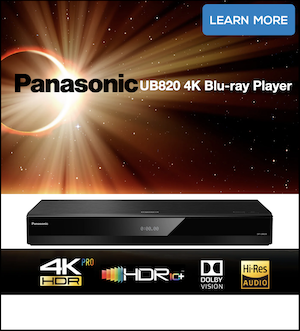(January 5, 2023). Just a few short days into the new year and Dirac, makers of the popular Dirac Live Room Correction suite, has launched a game-changing home audio technology. Its new “Active Room Treatment” or ART delivers a layer of room correction designed to hone and control frequencies up to 300Hz by leveraging each speaker deployed in a room. The company is debuting and demoing the technology at CES, and says it will begin shipping ART on StormAudio products during spring of 2023. The technology will ultimately find its way to other brands and platforms, but a timetable has yet to be released.
ART is born from nearly 15 years of car audio research and Dirac’s use of Multiple Input/Multiple Output (MIMO) mixed-phase impulse response. The company’s first commercial MIMO-enhanced product, Dirac Dimension, was employed by BMW and Rolls Royce to give passengers access to a “more spacious” audio experience. Years later, a second version called Dirac Unison honed impulse response alignment within a car’s cabin, essentially allowing every speaker to contribute to each individual speaker’s output capabilities.
Dan Roemer (Perlisten), Rikard Hellerfelt (Dirac), Dr. Nilo Casimiro Ericsson (Dirac), Matt Trinklein (Storm), Olivier Thumerel (Storm)
Dirac says ART brings those automotive technologies to the home theater environment, but with a focus on low frequencies. The reasoning behind a frequency limitation is speaker position variability. ART-like technologies can correct up to 4kHz within a car's cabin because speaker positions are consistently fixed and known. Home theater environments are far less predictable and widely varied, which has led Dirac to limit ART’s application to 300 Hz and below (ART will only correct up to 150Hz at launch).
Mathias Johansson, Dirac’s Chief Product Officer explains, “Now, with Active Room Treatment we are moving beyond traditional room correction to actually reduce bass decay times digitally, without needing bass traps or thick layers of wall absorption. By actively optimizing and coordinating bass response characteristics from all the speakers in a system, our latest Dirac Live feature reduces decay times to provide an incredibly dense and transparent audio experience in any room."
Dirac says ART isn’t a standalone product, but rather a third layer to the Dirac Live experience. Users will still need to employ Dirac Live and Bass Control to manage both impulse response and subwoofer integration. ART then enters the picture to attack decay and reverb. The technology is capable of using every speaker, from bookshelf models to full-sized floorstanders, to achieve overall effectiveness.
Dirac Live Active Room Treatment will be included, at no additional fee, in all StormAudio Processors and AVRs ordered from January 1, 2023 onward and will be made available through a firmware update in Spring 2023. StormAudio products ordered before January 1st will be upgradeable with Dirac Live Active Room Treatment after the Spring 2023 firmware update and by purchasing a license from Dirac’s online store at $299.
“We have been a close Dirac partner since 2017 and have always been a pioneer in implementing their cutting-edge technologies successfully,” explained Olivier Thumerel, StormAudio’s CEO. “We were the first to introduce the Dirac Live Bass Control in 2020 and are now proud to be leading again with the release of Dirac Live Active Room Treatment. Our users have always praised the performance and results of calibrating with Dirac tools on our platform, and now we are able to raise it to the next level again in partnership with Dirac.”
As for equipment manufactured by other brands, the company says legacy gear running Dirac Live and Bass Control should have no issues running the technology.
Dirac is showcasing ART at CES 2023 using a 5.3 Perlisten speaker array directed by a StormAudio ISP MK3 processor. AV NIRVANA is scheduled for an opening day demo session, so stay tuned for more information.
Last edited:












